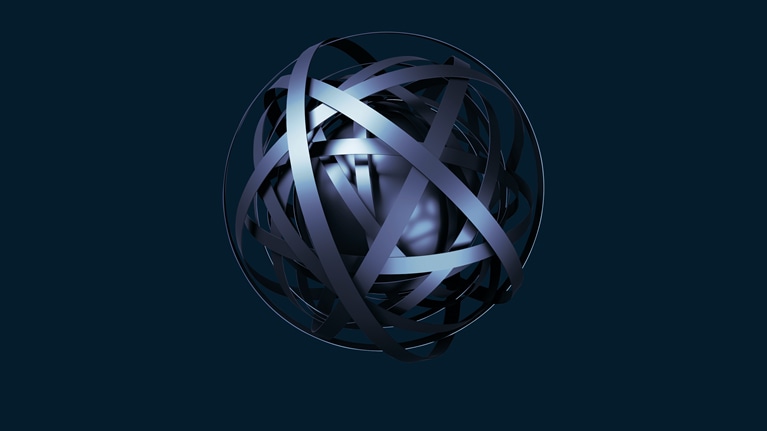Balancing flexibility and stability is the goal of any organizational structure. In fast-changing industries, flexibility supports the mastery of technological shifts while stability provides the much-needed efficiency to scale them up. Yet, too much flexibility breeds inefficiency or even disorder. And too much stability invites inertia and bureaucracy. Locating the sweet spot is elusive. Julian Fieres and his team are trying to find it—and bring the organization along with them.
Fieres, the head of transformation, strategy, and sustainability at ZF Friedrichshafen AG (ZF), Electrified Powertrain Technology division, is in the thick of a transformation involving two newly merged business units that together account for 30,000 employees and $10 billion in annual sales. Rather than combine the divisions in the usual way, however, ZF shook up the management hierarchy by separating people-leadership responsibilities from the task of running the product lines that form the traditional heart of the division. The result is a “helix” model featuring two parallel lines of accountability—a “dynamic axis” for the product lines themselves and a “stable axis” for the people, capabilities, and functional domains that support them. As with other agile organization models, the helix allows people and other resources to be shifted much more flexibly across product lines, helping ZF to compete in the fast-evolving landscape of e-mobility.
In an interview with McKinsey’s Kirsten Weerda, Fieres describes the strategic rationale for the move, the challenges of taking on ingrained corporate hierarchies, and the benefits of unleashing an organization’s latent entrepreneurial spirit. An edited version of the conversation follows.
McKinsey: Describe the situation ZF faced in 2020. What needed to change?
Julian Fieres: For context, we should start further back. For more than 100 years, ZF had successfully operated as a purely mechanical business. But with the advent of e-mobility, we set up a dedicated division focused on electric components and fully electric drivetrains. This e-mobility division was an internal supplier to ZF as well as an external actor in the passenger-car market. It worked in parallel with a second ZF division called “Powertrain.” Each division had a different focus, running in parallel to consumers and OEMs.
We reorganized the Powertrain division three years ago but left e-mobility alone. At the time, a two-speed approach was justified by how our customers were structured, as well as by the market itself. However, as e-mobility accelerated and moved to a tipping point, it became clear that the overall structure had outlived its benefits and that the units should be combined. We were missing out on synergies—both on the technical side and with customers.
McKinsey: But you didn’t merge the two units in a traditional way; you went much further.
Julian Fieres: Right. The real question was, “If we are already making a big move to integrate the divisions, how do we make it future-proof?” In terms of revenues and the number of employees, the combination of the two groups would represent one of the biggest European tier-one [suppliers] all by itself. In terms of the amount of change required, we didn’t want to reorganize now, only to have to do it again later.
The structure we’d already applied in the Powertrain division was perfect, as it was reactive and adaptable. Applying it to the new, bigger unit would allow us to change with the technology and accelerate—or decelerate—quickly with legislative decisions or with regional market developments.
But what this meant is that the people responsibility and direct-reporting lines would no longer be “owned” by the product lines—the customer-facing groups where people had always resided. Instead, we moved these responsibilities to new functional domains that we created. These domains are where we train and retrain the people and where we plan the resource allocation back to the product lines so we can shift resources—including people—much more quickly among them.
And what is perhaps unique is that we went all the way. For example, product-line heads who might have originally had 2,000 people in their reporting structure might have fewer than 50 now.
McKinsey: That’s a big shift. How did the product-line leaders react?
What leader would ever say, ‘Look, our products are nearing the end of their life cycle. I have too big of an R&D budget and too many people. To whom can I give them?’
Julian Fieres: The change rumbled in the jungle—I can tell you. What leader would ever raise a hand and say, “Look, our products are nearing the end of their life cycles. I have too big of an R&D budget and too many people. To whom can I give them?”
Reticence is understandable for executives used to a traditional pyramid organization, where the number of reports coincides with political power, with gravitas. In a company culture driven by KPI [key-performance-indicator] metrics, people can say, “I don’t own all necessary levers to fulfill my own performance KPIs. How should I be responsible for running projects if attributing the resources to the projects to make them a success is not in my power?”
McKinsey: How did you answer them? What was your approach for getting them on board?
Julian Fieres: I’m not going to lie to you; this was challenging. In essence, the way we won people over was by linking it to the market around us. It became clear very quickly that the synergies benefited the product-line businesses in direct ways. For example, by centralizing the operations function and creating a streamlined planning network across all product lines, we saw palpable improvement. The product lines now had more time to focus on customers and technology and weren’t burdened with day-to-day operational topics.
At the same time, the changes to the division coincided with a transformation of our processes, methods, and culture—a shift that we are still in the middle of. You cannot do one without the others.
For example, we are rolling out OKRs [objectives and key results] for the entire organization to ensure that everyone follows the same strategic objectives in a transparent way that provides alignment between the functional domains and the product lines. This wouldn’t be possible in classical KPI-driven reporting structures. And of course we emphasized that what the product-line leaders were losing was perceived power—not real power. In fact, the changes gave them new power as entrepreneurs.
Long story short: Is this easy? No. It requires a different set of management skills, a new mindset, a different culture, new tracking methods. But people have come to appreciate it. Just earlier today, I was in a workshop where a product-line leader told me, “Look, I’m now doing more of what I was actually hired for. I’m acting entrepreneurially again.”
McKinsey: Can you say more about the skills required of the product-line leaders? Who does well in this environment?
Julian Fieres: I think it’s partly a matter of asking, “What people did you hire in the first place?” If you hired product-line leaders because they were good plant managers, then they may face difficulties and need new skills. However, if you hired leaders who want to run businesses as technology- and customer-driven entrepreneurs, then now you’ve freed them up. They no longer have stones around their legs by having to manage plants, purchasing, labor. You’ve unleashed significant power.
In addition to entrepreneurial and product expertise, these leaders must manage across products and be technology experts, customer experts. The best are tech- or sales-driven leaders who are also very good team players because they’re better able to rally the functional domains around their projects.
McKinsey: Let’s shift gears and talk about the so-called stable axis—the domains. Say more about how they are organized and how they operate.
Julian Fieres: They are a full-fledged set of domain functions: R&D, operations, purchasing, logistics, sales, program management, HR, digitalization, strategy, you name it. Some can be quite sizable. The operations domain is more than 15,000 people because it includes all the direct employees in the plants; the strategy horizontal—my horizontal—is about 50 people.
McKinsey: What kinds of skills are needed to lead them?
Julian Fieres: The leaders need a high level of domain expertise, obviously, but other skills as well. As capability managers, these leaders must excel at strategic workforce management, for example—not short-sighted resource attribution for the products at hand, but the strategic foresight and long-term perspective to understand what the workload will be today, tomorrow, three to five years from now. They need to understand what skills they don’t have in-house and must acquire or build. These leaders become supply-and-demand managers of competence.
They must also be excellent—and rigid—portfolio managers who make their resource decisions in line with the overall transformation. The R&D organization, for example, cannot start research projects inside a product line whose products are classified as “quick return,” even if they have people idle. It’s a different mindset.
In fact, R&D leaders don’t necessarily have to be the best technologists in order to be successful. They must be farsighted and able to anticipate trends—including technological trends—but ultimately what matters is their ability to build the department in a way that ensures it’s ready to carry the demands of the organization going forward.
McKinsey: How does that look in practice? How do you balance the demands of a product line with those of the organization?
Julian Fieres: There cannot be a one-size-fits-all approach to the product lines. For example, when we set up the new approach, we developed a North Star for the organization as a whole, and then individual goals so that each product line contributes to it.
We did this by asking, “Where are the product lines going to be in 2030?” Clearly, some products will increase as e-mobility increases, while others will decline. This exercise requires brutal honesty. And you can’t let the product lines develop their own North Stars; they will all show you growth paths. It’s the nail in the coffin of your transformation. Everybody will look for a growth path, even if it’s just dreaming of a disruptive innovation that puts them back at the table. Nobody wants to raise their hand and say, “My products are becoming obsolete. Do you want to have my resources?”
But in fact, for some product lines, the right strategic path for 2030 is to make yourself obsolete in the most profitable way. That is challenging for any leader, but we reflect this in our planning. We have a portfolio-management logic in which we cluster products into three buckets: grow, balance, and quick return. As a product line, you will get prioritization of certain resources—or not—depending on what types of products you have in your portfolio. We use automatized dashboards to help us so that the domains can assess their share of resources across the portfolio and redistribute resources from one budget to another, from one unit to another, as required by the transformation.
You can think of the overall approach as moving from a classical budgeting approach to venture-capital-like steering.
You can think of the overall approach as moving from a classical budgeting approach to venture-capital-like steering. It is very fluid—so much so that in the case of our reformed innovation-funding process, we kill and start projects on a monthly or even weekly basis. We could never do that before.
McKinsey: What results has ZF seen thus far from the new approach?
Julian Fieres: The product lines have become more customer-centric, and the feedback from customers is very positive because it’s significantly easier to work with us as a partner. There is also a heightened focus on technology. By freeing the product lines from their former day-to-day housekeeping tasks, if you will, we have much deeper discussions on technology road maps, innovation, next-generation products, optimization.
Among the domains, meanwhile, there is increased focus on synergies and platforms. That goes for R&D, for plants, for digitalization, and so on. For example, with a central R&D team that oversees e-mobility platforms across the different product lines, we’re identifying synergies at the onset of the product-design process. These would have been lost before, because we never had the necessary degree of alignment. Another benefit is flexibility—the ability to shift resources to areas where they are needed. This wouldn’t have been possible in a structure where people and money belong to one product line.
McKinsey: What about the people side of things—all the employees who formerly reported to the product lines but now work in the functional domains?
Julian Fieres: It has also been positive. Suddenly their fates, their futures, their livelihoods are no longer inherently linked to a product that might be at the end of its life cycle. Their livelihoods are linked to the success of the overall organization. By being part of that stable axis, they can be retrained for different projects in different product lines. It’s a key change for our culture and a gigantic boon in communicating the transformation.
McKinsey: What challenges are ahead?
Julian Fieres: There is so much yet to do. We have only run the first part of a marathon. For example, we’re still improving how we align and track targets, such as giving the product lines an effective and measurable way to voice their demands. We are also still improving how the domains manage their portfolio of resources. Determining everyone’s actual responsibilities and tracking them are challenging, and we are changing the tools in our toolbox to manage it better. And we are always working hard to communicate the benefits of the structure to the broader ZF organization in order to increase buy-in and support.
Another focus is the speed at which we shift people in the structure—as well as how we retrain them. We are starting right now with the first cohort of employees in our new “e-cademy.” We’re investing a lot of energy in this. How do we take, say, a purchasing person with deep expertise in gearsets and retrain them in e-mobility? This will be critical.
So yes, there are many challenges. This is a living model, and it’s alive to the point where there’s heat, friction, failures, mistakes. There’s stumbling and hitting walls. But you know what? There’s nobody questioning the setup. We are no longer focused on the “what” or the “why.” We are all on a journey—a learning journey—now pushing for the best possible “how.”
Comments and opinions expressed by interviewees are their own and do not represent or reflect the opinions, policies, or positions of McKinsey & Company or have its endorsement.


